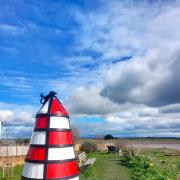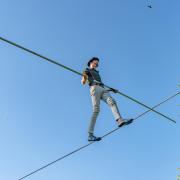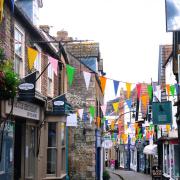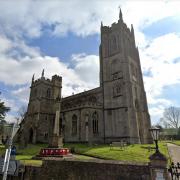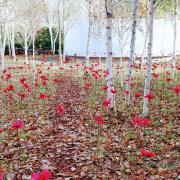By Somerset Wildlife Trust Patron Simon King
Somerset: a county name to conjure with. The place of the Summer people; the settlement by the inland sea. Whatever its actual derivation, there is no doubt that the very name is inextricably linked with the natural forces that coloured man’s occupation of the region. Host to one of the oldest known timber trackways in the world – the Sweet Track which was laid across the marshy Levels near Shapwick almost 6,000 years ago – Somerset has long hosted homosapiens alongside a rich community of other living things. And despite man’s best efforts to tame the wilderness, it is perhaps the tenacity of some of these natural neighbours that still populate the county that set it apart in the British Isles.
Somerset is the location of choice for wildlife filming
My own relationship with the county started in earnest when I was about 11 years old. My friend and mentor, Michael Kendal (with whom I presented the series ‘Man and Boy’ in the 1970s) lived near Cheddar. He would take me to watch Bewick’s swans on the Levels in the Winter, and yellow wagtails and snipe in the Summer. The first film I made as a cameraman, at the age of 17, was based on the natural history of the willow tree – much of it shot on the Somerset Levels and thereafter Somerset was my location of choice to film barn owls, hares, lapwing and a host of other wild animals that seemed as inextricable a part of the landscape as the big skies and Winter floods.
Since those halcyon days much has changed, not all for the good. Extensive land drainage in the 1960s and 1970s and a shift from haymaking to harvesting silage pushed many of the hitherto common species like hares, snipe and lapwing to the brink of extinction in many parts of the county. But there have been changes for the better too. Vast tracts of country, which had been used for peat extraction, were converted into wetland nature reserves. Areas of a once industrial landscape, at the height of the mining industries in Somerset, are now colonised by ash forest and brambles. Now I can hear bitterns booming in the reed beds in Spring, watch marsh harriers cruise the skies, even witness the exotic egrets that until very recently were restricted to continental Europe and Africa.
Where I live, in a typical rural valley in the county, I am visited by otters, badgers, foxes, kingfishers, dippers, roe deer, three species of owl and an ever growing cast of other wild creatures that we chart with a network of live cameras (see simonkingwildlife.com and our YouTube Channel youtube.com/user/simonkingwildlife for more details). We have planted more than 2,000 trees, introduced large areas of standing water and sewn thousands of wildflowers, including seed form the trust’s Chancellor’s Farm Nature Reserve, which has been crowned Somerset’s Coronation Meadow. With advice from Somerset Wildlife Trust we are managing our corner of the Land of Summer to work in harmony with, rather than against the wild world. And our young daughter can run through meadows that leap to the flickering colour of a thousand butterflies, as I did as a child.
By supporting Somerset Wildlife Trust in its 50th year, you can help to make that reality something that every child in the county can realise, and in so doing afford them the most precious service of all – the gift of love for the world of nature about them.






